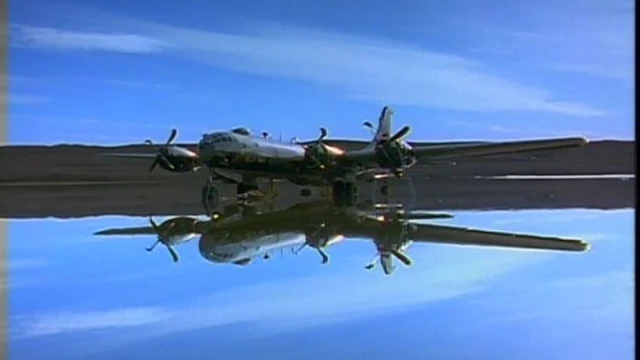
In Wehrmacht, the direct medical care for wounded soldiers on the battlefield was provided by medics who were part of platoons, companies, and battalions. They could be distinguished from ordinary infantrymen by their special medical pouches, additional water flasks, patches, and armbands. Filmed footage of wounded soldiers do not appear in the propaganda newsreels of the Third Reich. Those films preferred to present laughing soldiers to strengthen the confidence in victory on the home front.
This documentary offers a special behind-the-scenes look at the Third Reich. The documentary series published in the Netherlands under the title 'The German Archive Presents' is a creation by filmmaker and historian Karl Hoffkes, an avid collector of archival material as old film reels. Over the years, he has built up an extensive private collection of film material from all kinds of sources. His own archive has become the basis of a series of documentaries, often playing in the margins of the great events of World War II. This makes the documentaries interesting for an audience who knows the course of the war, but wants to know more about specific aspects of warfare and its impact on the soldiers, civilians and their environment.
The original title of this part of 'The German Archives Presents...' is: 'Als Arzt im Fronteinsatz' and follows the experiences of the motorized medical unit of the 254th Division. The unit has been added to Army Group B, commanded by general (later field marshal) von Bock. For the making of the documentary, the film material of the staff doctor Dr. Karl Trautman is mainly used. Trautman was an enthusiastic amateur filmmaker, who took his 16 mm camera everywhere to shoot pictures of what was happening around him.
Army group B was involved in the invasion of the Netherlands, Belgium and France in early 1940. This is very interesting for people in the Dutch language area. We see the medical unit at the beginning of May 1940 practice in the forests near Kleve and Goch. Marching, simulating an airstrike, taking care of the injured. Then the war on the Western Front begin and the unit behind the "Blitzkrieg" enters the Netherlands. Dordrecht and Rotterdam pass by, after which the army enters France via Brussels. In Abbeville, the medical unit temporarily establishes a headquarters. Via a stopover in Paris, the unit is transported to the east by train. There await the preparation for Operation Barbarossa, the invasion of the Soviet Union in June 1941. Via Estonia and Lithuania, the German army is heading towards Leningrad, the medical division in its wake. The harsh Russian winter causes major problems for the poorly prepared and equipped Germans. Trautman has run out of film, so the next images only date from the spring of 1942. In 1943 the army calls Dr. Trautman and his unit return to Germany. As indicated in the film, it is likely to save their life. Hundreds of thousands of their compatriots are in battle or are captured by the Soviets.
The home movies of a German senior medical officer that have now been found are all the more significant, as they reflect the everyday life of a medical company in France and Russia in an undisguised manner. The films, which have never been shown before, document a largely unknown chapter of the war on the western and eastern fronts in a unique way.
Written & Directed by Karl Hoffkes ; Polar Film & Medien GmbH Production
















